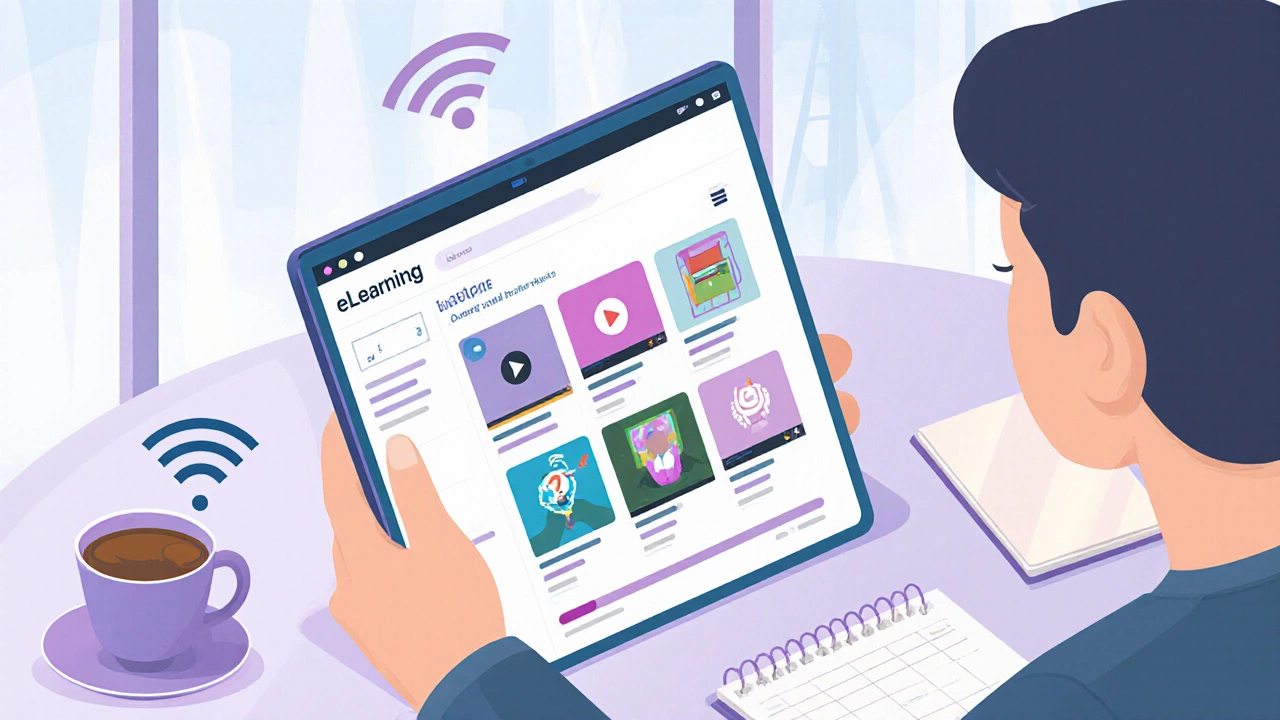Learning Format Selector
Which Learning Format Is Right for You?
Answer these questions to get a recommendation based on your specific needs
Select options to see recommendation
Key Takeaways
- Virtual learning relies on live, interactive sessions; eLearning is often self‑paced and asynchronous.
- Both use digital tools, but the choice of platform and teaching style differs.
- Hybrid models combine the strengths of each to suit varied learner needs.
- Understanding the core differences helps educators pick the right format for their goals.
- Future trends point toward AI‑driven personalization across both approaches.
What is Virtual Learning?
When you see a classroom on Zoom or Microsoft Teams, you are experiencing Virtual Learning is a real‑time, instructor‑led educational experience delivered over the internet. Participants log in at a scheduled time, see and hear each other, and can chat, raise hands, or break out into smaller groups. The interaction mimics a physical classroom, just without the walls. Typical tools include video‑conferencing software, digital whiteboards, and screen‑sharing apps. Because everyone is present together, the learning feels immediate and collaborative.
What is eLearning?
eLearning is a self‑paced, often asynchronous, digital learning format that lets learners access content anytime, anywhere. Courses are broken into modules, videos, quizzes, and interactive simulations that sit on a Learning Management System (LMS) like Moodle or Canvas. Learners progress at their own speed, revisiting tricky sections as needed. While eLearning can include discussion boards or occasional live webinars, its core is flexibility and independence.

Core Differences at a Glance
| Aspect | Virtual Learning | eLearning |
|---|---|---|
| Delivery Mode | Synchronous (live) | Asynchronous (on‑demand) |
| Interaction Type | Real‑time discussion, breakout rooms, live polls | Forums, automated quizzes, self‑check exercises |
| Typical Tools | Zoom, Microsoft Teams, Google Meet | Moodle, Coursera, Khan Academy, SCORM packages |
| Ideal Use Cases | Workshops, language labs, lab simulations requiring immediate feedback | Certification courses, compliance training, large‑scale MOOCs |
| Assessment Style | Live quizzes, group activities, instructor grading | auto‑graded quizzes, peer‑review assignments, competency tracking |
| Flexibility | Fixed schedule, limited to internet connection at class time | Learn anytime, pause, rewind, repeat |
When to Choose Each Approach
Ask yourself three questions before deciding:
- Do learners need real‑time feedback? If yes, virtual learning shines because instructors can correct misunderstandings on the spot.
- Is the audience spread across time zones? Asynchronous eLearning avoids scheduling headaches.
- What resources are available? High‑quality video production favors eLearning, while a strong internet bandwidth supports virtual sessions.
For corporate onboarding, a blend works best: a kickoff virtual workshop followed by self‑paced eLearning modules for policy details.
Common Misconceptions
- “Virtual learning = video calls.” It’s more than just Zoom; it includes interactive tools, virtual labs, and real‑time assessments.
- “eLearning is boring.” Modern platforms add gamification, adaptive pathways, and AR/VR simulations to keep learners engaged.
- “One size fits all.” Learners differ; offering both synchronous and asynchronous options maximizes reach.

Practical Tips for Blending Both
Here’s a quick recipe to create a hybrid learning experience:
- Start with an introductory virtual session to set expectations and build community.
- Release core content as eLearning modules on an LMS (Moodle, Canvas, or even a simple WordPress plugin).
- Schedule weekly live Q&A webinars to address lingering questions.
- Use discussion boards (like those in Blackboard) for peer‑to‑peer support.
- Track progress with built‑in analytics and send personalized nudges via email.
Future Trends in Online Education
Artificial intelligence is narrowing the gap between virtual learning and eLearning. AI‑driven chatbots can answer learner queries instantly, mimicking a live instructor. Adaptive learning engines tailor eLearning paths based on performance, while immersive XR (extended reality) labs let students experiment in a virtual space during live sessions. By 2027, most institutions will offer a seamless “smart learning environment” where the distinction is less about format and more about personalization.
Frequently Asked Questions
Is virtual learning the same as online classroom?
A virtual classroom is a specific type of virtual learning that focuses on real‑time instruction, usually via video conferencing tools.
Can I replace all live sessions with eLearning?
Not always. Skills that require immediate feedback-like language pronunciation or lab safety-still benefit from live interaction.
What are the best platforms for virtual learning?
Zoom, Microsoft Teams, and Google Meet dominate because they offer breakout rooms, screen sharing, and integration with LMSs.
How does an LMS support eLearning?
An LMS stores course materials, tracks progress, grades quizzes automatically, and often provides analytics for instructors.
Is blended learning cheaper than pure virtual or eLearning?
Blended models can reduce costs by limiting live‑session hours while still delivering high‑impact content through eLearning modules.





